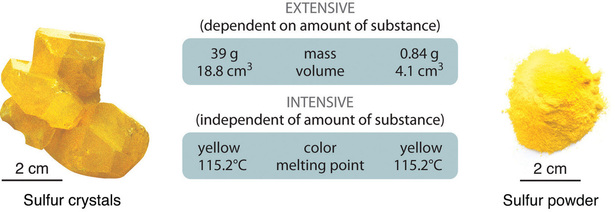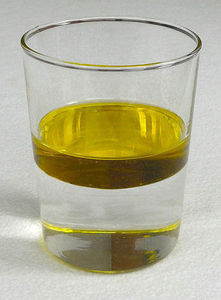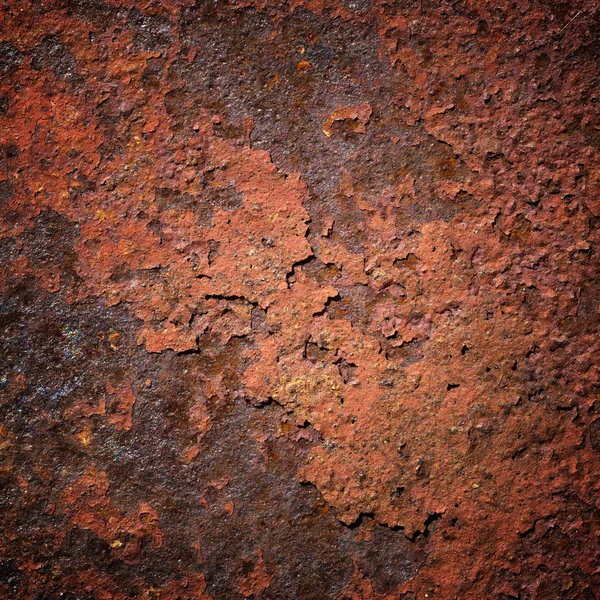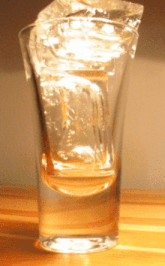1.2: Properties of Matter
- Page ID
- 389529
\( \newcommand{\vecs}[1]{\overset { \scriptstyle \rightharpoonup} {\mathbf{#1}} } \)
\( \newcommand{\vecd}[1]{\overset{-\!-\!\rightharpoonup}{\vphantom{a}\smash {#1}}} \)
\( \newcommand{\id}{\mathrm{id}}\) \( \newcommand{\Span}{\mathrm{span}}\)
( \newcommand{\kernel}{\mathrm{null}\,}\) \( \newcommand{\range}{\mathrm{range}\,}\)
\( \newcommand{\RealPart}{\mathrm{Re}}\) \( \newcommand{\ImaginaryPart}{\mathrm{Im}}\)
\( \newcommand{\Argument}{\mathrm{Arg}}\) \( \newcommand{\norm}[1]{\| #1 \|}\)
\( \newcommand{\inner}[2]{\langle #1, #2 \rangle}\)
\( \newcommand{\Span}{\mathrm{span}}\)
\( \newcommand{\id}{\mathrm{id}}\)
\( \newcommand{\Span}{\mathrm{span}}\)
\( \newcommand{\kernel}{\mathrm{null}\,}\)
\( \newcommand{\range}{\mathrm{range}\,}\)
\( \newcommand{\RealPart}{\mathrm{Re}}\)
\( \newcommand{\ImaginaryPart}{\mathrm{Im}}\)
\( \newcommand{\Argument}{\mathrm{Arg}}\)
\( \newcommand{\norm}[1]{\| #1 \|}\)
\( \newcommand{\inner}[2]{\langle #1, #2 \rangle}\)
\( \newcommand{\Span}{\mathrm{span}}\) \( \newcommand{\AA}{\unicode[.8,0]{x212B}}\)
\( \newcommand{\vectorA}[1]{\vec{#1}} % arrow\)
\( \newcommand{\vectorAt}[1]{\vec{\text{#1}}} % arrow\)
\( \newcommand{\vectorB}[1]{\overset { \scriptstyle \rightharpoonup} {\mathbf{#1}} } \)
\( \newcommand{\vectorC}[1]{\textbf{#1}} \)
\( \newcommand{\vectorD}[1]{\overrightarrow{#1}} \)
\( \newcommand{\vectorDt}[1]{\overrightarrow{\text{#1}}} \)
\( \newcommand{\vectE}[1]{\overset{-\!-\!\rightharpoonup}{\vphantom{a}\smash{\mathbf {#1}}}} \)
\( \newcommand{\vecs}[1]{\overset { \scriptstyle \rightharpoonup} {\mathbf{#1}} } \)
\( \newcommand{\vecd}[1]{\overset{-\!-\!\rightharpoonup}{\vphantom{a}\smash {#1}}} \)
\(\newcommand{\avec}{\mathbf a}\) \(\newcommand{\bvec}{\mathbf b}\) \(\newcommand{\cvec}{\mathbf c}\) \(\newcommand{\dvec}{\mathbf d}\) \(\newcommand{\dtil}{\widetilde{\mathbf d}}\) \(\newcommand{\evec}{\mathbf e}\) \(\newcommand{\fvec}{\mathbf f}\) \(\newcommand{\nvec}{\mathbf n}\) \(\newcommand{\pvec}{\mathbf p}\) \(\newcommand{\qvec}{\mathbf q}\) \(\newcommand{\svec}{\mathbf s}\) \(\newcommand{\tvec}{\mathbf t}\) \(\newcommand{\uvec}{\mathbf u}\) \(\newcommand{\vvec}{\mathbf v}\) \(\newcommand{\wvec}{\mathbf w}\) \(\newcommand{\xvec}{\mathbf x}\) \(\newcommand{\yvec}{\mathbf y}\) \(\newcommand{\zvec}{\mathbf z}\) \(\newcommand{\rvec}{\mathbf r}\) \(\newcommand{\mvec}{\mathbf m}\) \(\newcommand{\zerovec}{\mathbf 0}\) \(\newcommand{\onevec}{\mathbf 1}\) \(\newcommand{\real}{\mathbb R}\) \(\newcommand{\twovec}[2]{\left[\begin{array}{r}#1 \\ #2 \end{array}\right]}\) \(\newcommand{\ctwovec}[2]{\left[\begin{array}{c}#1 \\ #2 \end{array}\right]}\) \(\newcommand{\threevec}[3]{\left[\begin{array}{r}#1 \\ #2 \\ #3 \end{array}\right]}\) \(\newcommand{\cthreevec}[3]{\left[\begin{array}{c}#1 \\ #2 \\ #3 \end{array}\right]}\) \(\newcommand{\fourvec}[4]{\left[\begin{array}{r}#1 \\ #2 \\ #3 \\ #4 \end{array}\right]}\) \(\newcommand{\cfourvec}[4]{\left[\begin{array}{c}#1 \\ #2 \\ #3 \\ #4 \end{array}\right]}\) \(\newcommand{\fivevec}[5]{\left[\begin{array}{r}#1 \\ #2 \\ #3 \\ #4 \\ #5 \\ \end{array}\right]}\) \(\newcommand{\cfivevec}[5]{\left[\begin{array}{c}#1 \\ #2 \\ #3 \\ #4 \\ #5 \\ \end{array}\right]}\) \(\newcommand{\mattwo}[4]{\left[\begin{array}{rr}#1 \amp #2 \\ #3 \amp #4 \\ \end{array}\right]}\) \(\newcommand{\laspan}[1]{\text{Span}\{#1\}}\) \(\newcommand{\bcal}{\cal B}\) \(\newcommand{\ccal}{\cal C}\) \(\newcommand{\scal}{\cal S}\) \(\newcommand{\wcal}{\cal W}\) \(\newcommand{\ecal}{\cal E}\) \(\newcommand{\coords}[2]{\left\{#1\right\}_{#2}}\) \(\newcommand{\gray}[1]{\color{gray}{#1}}\) \(\newcommand{\lgray}[1]{\color{lightgray}{#1}}\) \(\newcommand{\rank}{\operatorname{rank}}\) \(\newcommand{\row}{\text{Row}}\) \(\newcommand{\col}{\text{Col}}\) \(\renewcommand{\row}{\text{Row}}\) \(\newcommand{\nul}{\text{Nul}}\) \(\newcommand{\var}{\text{Var}}\) \(\newcommand{\corr}{\text{corr}}\) \(\newcommand{\len}[1]{\left|#1\right|}\) \(\newcommand{\bbar}{\overline{\bvec}}\) \(\newcommand{\bhat}{\widehat{\bvec}}\) \(\newcommand{\bperp}{\bvec^\perp}\) \(\newcommand{\xhat}{\widehat{\xvec}}\) \(\newcommand{\vhat}{\widehat{\vvec}}\) \(\newcommand{\uhat}{\widehat{\uvec}}\) \(\newcommand{\what}{\widehat{\wvec}}\) \(\newcommand{\Sighat}{\widehat{\Sigma}}\) \(\newcommand{\lt}{<}\) \(\newcommand{\gt}{>}\) \(\newcommand{\amp}{&}\) \(\definecolor{fillinmathshade}{gray}{0.9}\)- To define physical properties and chemical properties
- To identify and separate physical from chemical properties and changes
- To define extensive and intensive properties
- To identify and separate extensive from intensive properties and changes
All matter has physical and chemical properties. Physical properties are characteristics that scientists can measure without changing the composition of the sample under study, such as mass, color, and volume (the amount of space occupied by a sample). Chemical properties describe the characteristic ability of a substance to react to form new substances; they include its flammability and susceptibility to corrosion. All samples of a pure substance have the same chemical and physical properties. For example, pure copper is always a reddish-brown solid (a physical property) and always dissolves in dilute nitric acid to produce a blue solution and a brown gas (a chemical property).
Physical properties can be extensive or intensive. Extensive properties vary with the amount of the substance and include mass, weight, and volume. Intensive properties, in contrast, do not depend on the amount of the substance; they include color, melting point, boiling point, electrical conductivity, and physical state at a given temperature. For example, elemental sulfur is a yellow crystalline solid that does not conduct electricity and has a melting point of 115.2 °C, no matter what amount is examined (Figure \(\PageIndex{1}\)). Scientists commonly measure intensive properties to determine a substance’s identity, whereas extensive properties convey information about the amount of the substance in a sample.

Although mass and volume are both extensive properties, their ratio is an important intensive property called density (\(\rho\), the lower case Greek letter, rho). Density is defined as mass per unit volume and is usually expressed in grams per cubic centimeter (g/cm3). As mass increases in a given volume, density also increases. For example, lead, with its greater mass, has a far greater density than the same volume of air, just as a brick has a greater density than the same volume of Styrofoam. At a given temperature and pressure, the density of a pure substance is a constant:
\[\begin{align*} \text{density} &={\text{mass} \over \text{volume}} \\[4pt] \rho &={m \over V} \label{Eq1} \end{align*} \]
Pure water, for example, has a density of 0.998 g/cm3 at 25 °C. The average densities of some common substances are in Table \(\PageIndex{1}\). Notice that corn oil has a lower mass to volume ratio than water. This means that when added to water, corn oil will “float” (Figure \(\PageIndex{2}\)).
| Substance | Density at 25 °C (g/cm3) | Substance | Density at 25 °C (g/cm3) |
|---|---|---|---|
| blood | 1.035 | corn oil | 0.922 |
| body fat | 0.918 | mayonnaise | 0.910 |
| whole milk | 1.030 | honey | 1.420 |

Physical Property and Change
Physical changes are changes in which no chemical bonds are broken or formed. This means that the same types of compounds or elements that were there at the beginning of the change are there at the end of the change. Because the ending materials are the same as the beginning materials, the properties (such as color, boiling point, etc) will also be the same. Physical changes involve moving molecules around, but not changing them. Some types of physical changes include:
- Changes of state (changes from a solid to a liquid or a gas and vice versa)
- Separation of a mixture
- Physical deformation (cutting, denting, stretching)
- Making solutions (special kinds of mixtures) .
As an ice cube melts, its shape changes as it acquires the ability to flow. However, its composition does not change. Melting is an example of a physical change (Figure \(\PageIndex{3}\)), since some properties of the material change, but the identity of the matter does not. Physical changes can further be classified as reversible or irreversible. The melted ice cube may be refrozen, so melting is a reversible physical change. Physical changes that involve a change of state are all reversible. Other changes of state include vaporization (liquid to gas), freezing (liquid to solid), and condensation (gas to liquid). Dissolving is also a reversible physical change. When salt is dissolved into water, the salt is said to have entered the aqueous state. The salt may be regained by boiling off the water, leaving the salt behind.
Figure \(\PageIndex{3}\): Ice Melting is a physical change. When solid water (\(\ce{H_2O}\)) as ice melts into a liquid (water), it appears changed. However, this change is only physical as the the composition of the constituent molecules is the same: 11.19% hydrogen and 88.81% oxygen by mass.
Chemical Properties and Change
Chemical changes occur when bonds are broken and/or formed between molecules or atoms. This means that one substance with a certain set of properties (such as melting point, color, taste, etc) is turned into a different substance with different properties. Chemical changes are frequently harder to reverse than physical changes.
One good example of a chemical change is burning paper. In contrast to the act of ripping paper, the act of burning paper actually results in the formation of new chemicals (carbon dioxide and water, to be exact). Another example of chemical change occurs when water is formed. Each molecule contains two atoms of hydrogen and one atom of oxygen chemically bonded.
Another example of a chemical change is what occurs when natural gas is burned in your furnace. This time, before the reaction we have a molecule of methane, \(\ce{CH_4}\), and two molecules of oxygen, \(\ce{O_2}\), while after the reaction we have two molecules of water, \(\ce{H_2O}\), and one molecule of carbon dioxide, \(\ce{CO_2}\). In this case, not only has the appearance changed, but the structure of the molecules has also changed. The new substances do not have the same chemical properties as the original ones. Therefore, this is a chemical change.
The chemical(s) on the left side of an arrow are those that are being broken apart to form the chemical(s) on the right side of the arrow.
The combustion of magnesium metal is also chemical change (Magnesium + Oxygen → Magnesium Oxide) as is the rusting of iron (Iron + Oxygen → Iron Oxide/ Rust). Using the components of composition and properties, we have the ability to distinguish one sample of matter from the others.


Different Definitions of Changes: https://youtu.be/OiLaMHigCuo
Different Definitions of Properties: https://youtu.be/n7UwjQJGh9Y
Summary
The physical properties of a substance can be changed without changing the identity of the substance. The chemical properties of a substance can only be changed by changing the identity of the substance. Extensive properties change with the amount of substance. Intensive properties are constant and solely depend on the identity of the substance.
1. Identify the following as physical changes or chemical changes.
a. A rubber band thins as you stretch it.
b. The change in color on a lab apron where acid is spilled on it.
c. A cream sauce curdling when tomatoes are added into it.
d. The surface area of a piece of paper when a piece is cut off.
e. The change in orange-color intensity as seltzer is added to orange juice.
f. Silver jewelry turning black with tarnish or copper jewelry turning green with verdigris.
g. The decrease in the temperature of water as it is chilled.
h. The removal of alcohol from wine or brandy when heating a sauce.
2. Identify the following as extensive properties or intensive properties.
a. The surface area of a window pane.
b. The thermal insulation of a window pane (how well it prevents heat moving from one side to the other).
c. The amount of rock salt needed to cover a side walk.
d. The strength of magnet.
e. The speed of a moving vehicle.
f. The mass of a block of gold.
g. The volume of a block of gold.
h. The density of a block of gold.
- Answer
-
1. Identify the following as physical changes or chemical changes.
a. A rubber band thins as you stretch it. Physical change
b. The change in color on a lab apron where acid is spilled on it. Chemical change
c. A cream sauce curdling when tomatoes are added into it. Chemical change
d. The surface area of a piece of paper when a piece is cut off. Physical change
e. The change in orange-color intensity as seltzer is added to orange juice. Physical change
f. Silver jewelry turning black with tarnish or copper jewelry turning green with verdigris. Chemical change
g. The decrease in the temperature of water as it is chilled. Physical change
h. The removal of alcohol from wine or brandy when heating a sauce. Physical change
2. Identify the following as extensive properties or intensive properties.
a. The surface area of a window pane. Extensive property
b. The thermal insulation of a window pane (how well it prevents heat moving from one side to the other). Intensive property
c. The amount of rock salt needed to cover a side walk. Extensive property
d. The boiling point of alcohol. Intensive property
e. The speed of a moving vehicle. Extensive property
f. The mass of a block of gold. Extensive property
g. The volume of a block of gold. Extensive property
h. The density of a block of gold. Intensive property
References
- Petrucci, Bissonnette, Herring, Madura. General Chemistry: Principles and Modern Applications. Tenth ed. Upper Saddle River, NJ 07458: Pearson Education Inc., 2011.
- Cracolice, Peters. Basics of introductory Chemistry An active Learning Approach. Second ed. Belmont, CA 94001:Brooks/Cole, 2007.
Contributors and Attributions
- Samantha Ma (UC Davis)


